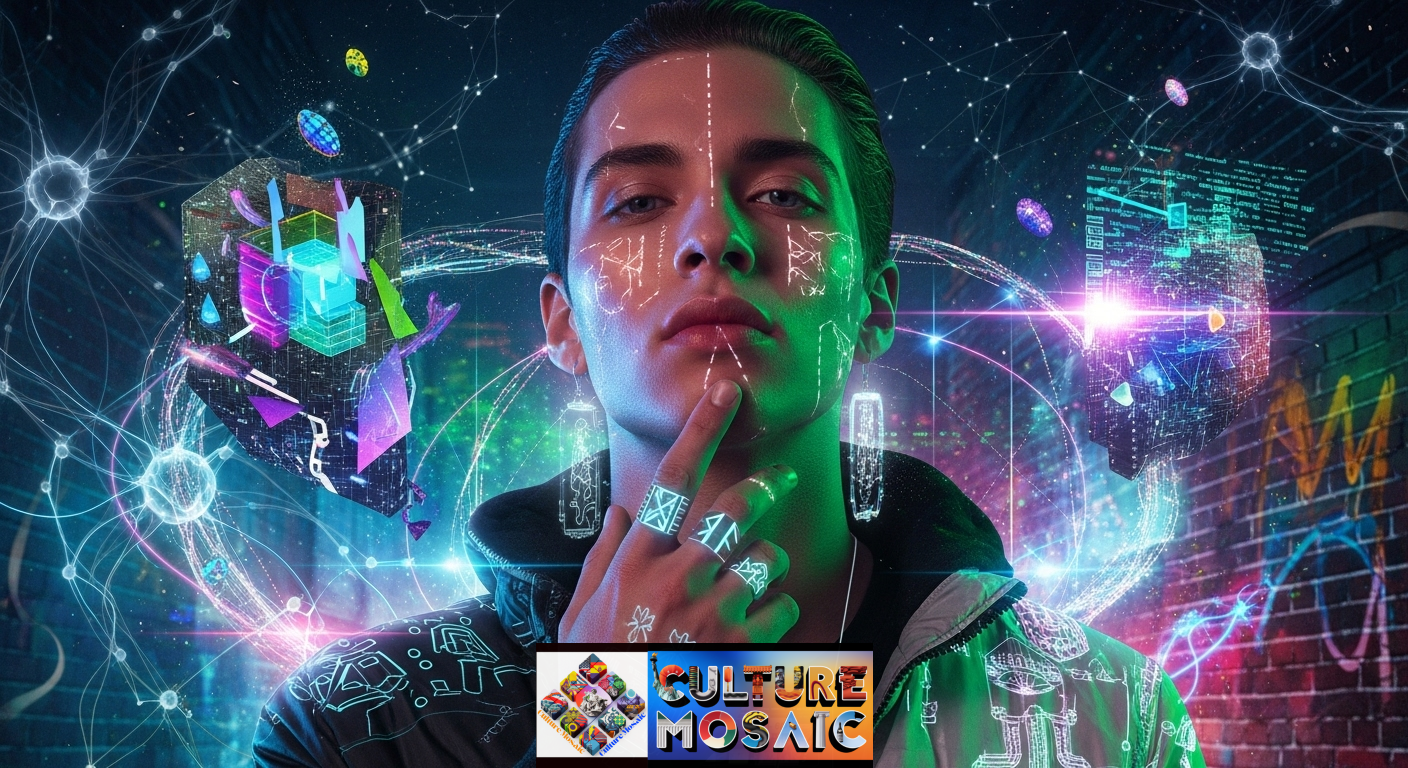The art world isn’t hanging in galleries anymore. It’s scrolling past you on TikTok at 2 AM, transforming your face with an AR filter, and letting you design an entire wardrobe that exists only in pixels. This is digital artistic expression in 2025, and it’s being led by a generation that treats technology not as a tool, but as an extension of their creative voice.
Gen Z has fundamentally changed what it means to be an artist. They’ve taken the canvas off the wall and put it in their pockets, on their bodies, and inside virtual worlds where the only limit is imagination. This isn’t just about creating pretty pictures. It’s about identity, activism, and redefining what art can be when everyone has access to the same powerful tools.
From Gallery Wall to TikTok Feed: The New Accessibility of Art
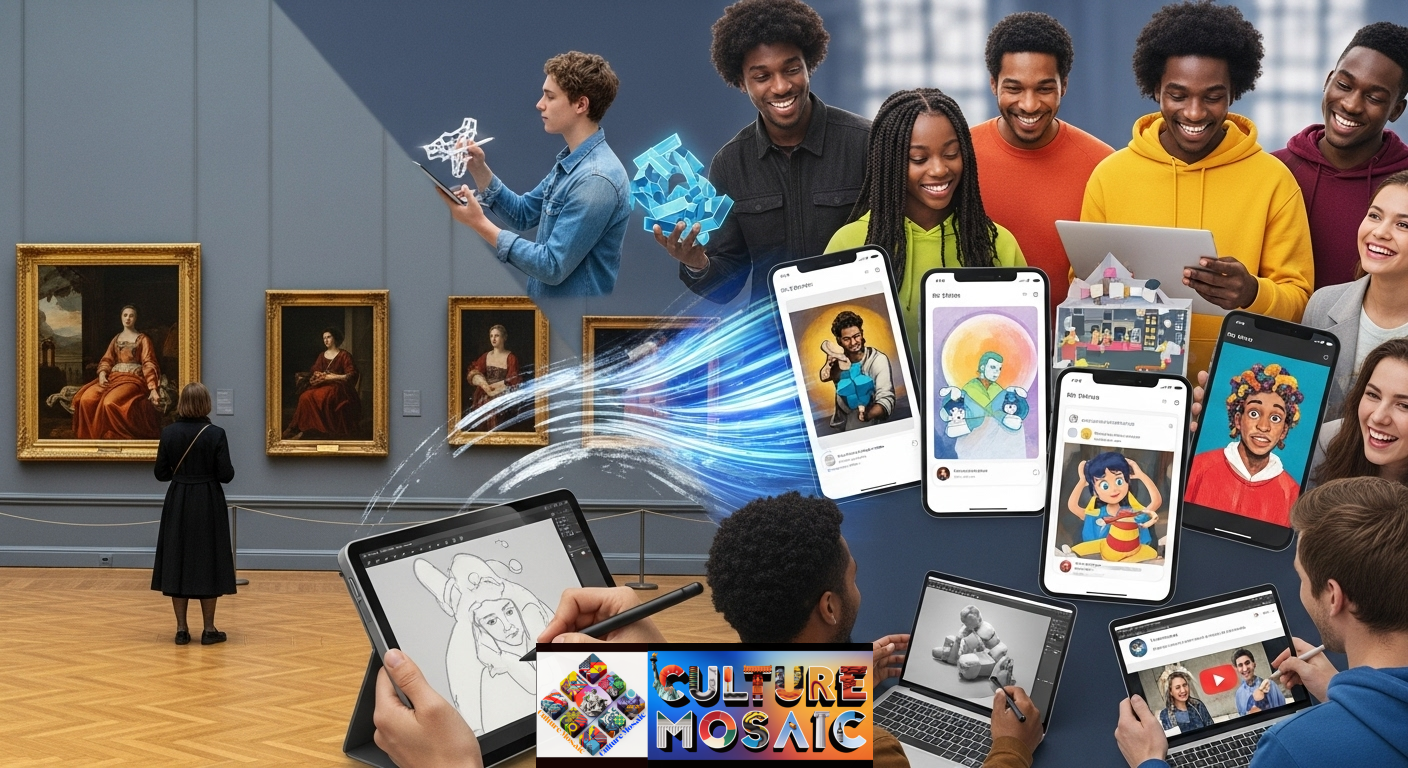
Remember when experiencing art meant planning a museum visit or flipping through an expensive coffee table book? That world feels ancient now. Digital artistic expression has demolished those barriers completely.
TikTok has become the world’s largest art gallery, with over 150 million American users scrolling through creative content daily. Instagram’s visual-first platform hosts millions of digital artists who’ve built careers without ever setting foot in a traditional gallery. The shift is radical: art is no longer something you travel to see. It comes to you, personalized by algorithms that learn what speaks to your aesthetic sensibilities.
This accessibility has sparked an explosion of creativity. A teenager in rural Montana has the same platform as a design school graduate in New York. The playing field has leveled in a way that previous generations of artists could only dream about. When a digital illustration can reach 10 million people overnight, the definition of artistic success fundamentally changes.
The numbers tell the story. Digital art software downloads have increased by 340% since 2020. Procreate, the iPad drawing app, has been purchased over 30 million times. These aren’t professional artists hoarding expensive equipment. These are everyday people who realized that digital artistic expression is now within everyone’s reach.
But accessibility doesn’t mean the work lacks depth. Scroll through art TikTok and you’ll find sophisticated discussions about color theory, composition, and technique happening in 60-second videos. Young artists are teaching each other, building communities, and creating work that rivals anything in traditional art spaces. The medium has changed, but the passion and skill haven’t diminished.
Digital Fashion and the Art of the Avatar
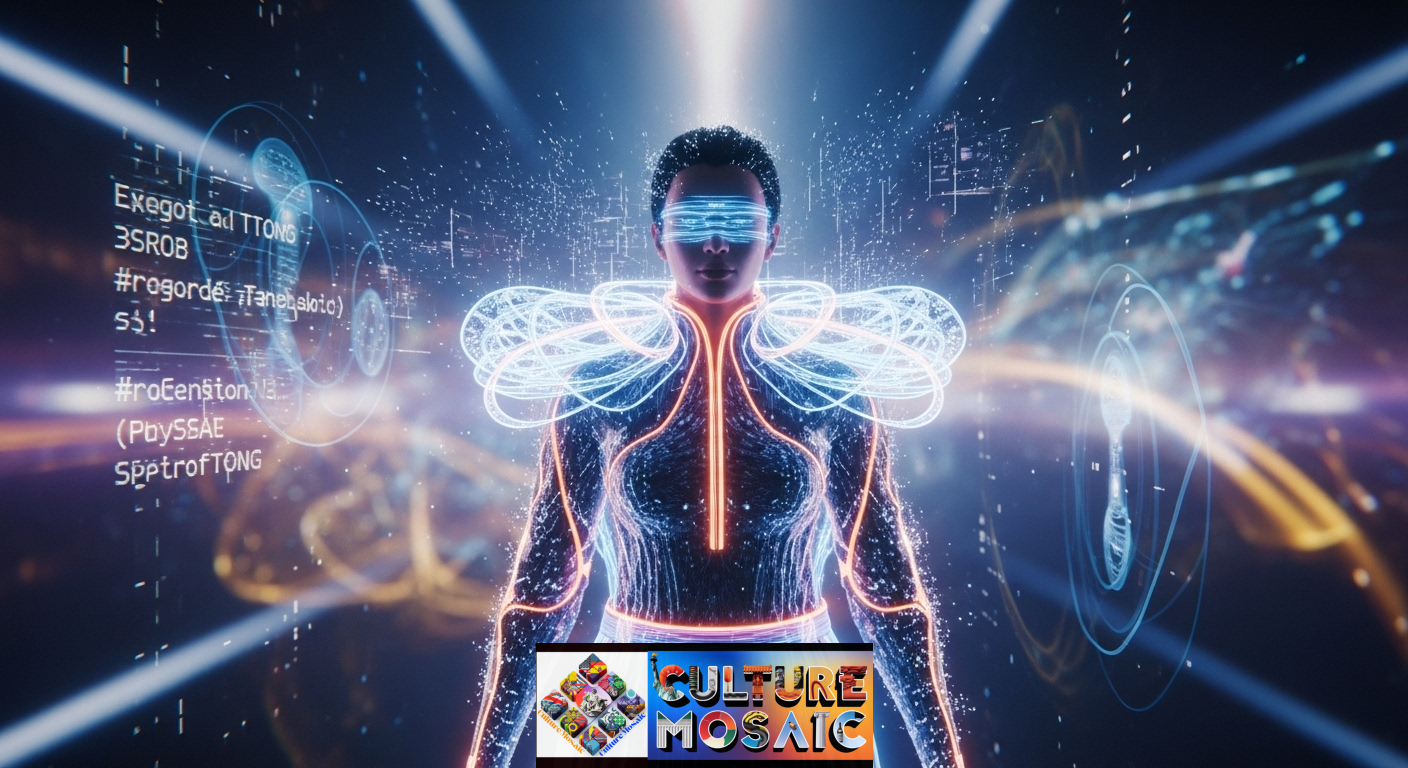
Fashion has always been a form of self-expression, but digital artistic expression has taken it somewhere completely new. Your physical wardrobe is limited by budget, body type, and the laws of physics. Your digital wardrobe? Completely boundless.
Augmented reality filters have transformed how Gen Z experiments with style. You can try on dozens of different looks in minutes, testing bold makeup choices or avant-garde fashion statements without commitment. Apps like Snapchat and Instagram have made this so seamless that over 200 million people use AR features daily. This isn’t vanity. It’s a low-stakes laboratory for identity exploration.
The real revolution is happening in virtual spaces. Gaming platforms like Roblox and Fortnite have become unexpected fashion runways where digital artistic expression meets commerce. Brands are designing virtual clothing that sells for real money, and some of these digital items sell for more than their physical counterparts. A limited-edition skin in a popular game can cost hundreds of dollars because it’s not just clothing—it’s a statement of identity in spaces where millions gather.
NFT fashion initially seemed like a bubble, but it’s evolved into something more interesting. Digital fashion houses are creating wearables that work across multiple platforms. Imagine designing an outfit once and wearing it in every virtual space you inhabit, from video game avatars to virtual meetings. This concept of portable digital identity is gaining serious traction.
What makes this form of digital artistic expression so powerful is how it removes traditional barriers. Physical fashion is constrained by manufacturing costs, material limitations, and practical wearability. Digital fashion ignores all of that. You can wear a dress made of fire, a suit covered in living plants, or accessories that defy gravity. The creativity is uninhibited.
Gen Z treats their avatars with the same care they treat their physical appearance, sometimes more. These digital representations aren’t frivolous—they’re how millions of people present themselves in the spaces where they spend significant time. The avatar is the ultimate canvas for self-expression, and young artists are treating it with the seriousness it deserves.
AI as the Artist’s Tool: Remixing Style
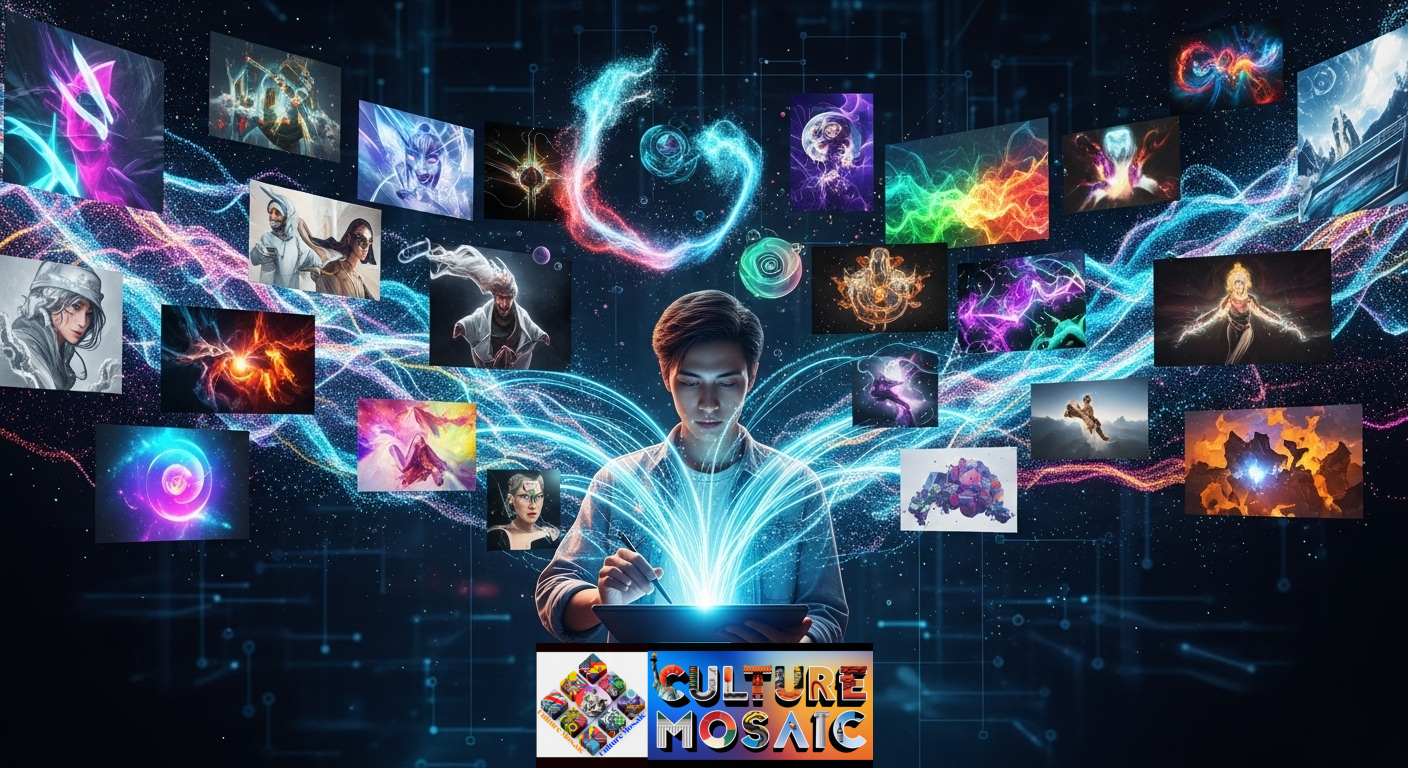
The conversation around AI and art often gets stuck in a false dichotomy: human versus machine. But Gen Z artists using digital artistic expression aren’t replacing themselves with AI. They’re collaborating with it in ways that expand creative possibilities.
Tools like Midjourney, DALL-E, and Stable Diffusion have become part of the creative workflow for millions of young artists. They’re not endpoints—they’re starting points. An artist might generate 50 variations of a concept in minutes, then spend hours refining the most promising one. The AI handles the rapid ideation that used to take days of sketching, freeing the artist to focus on refinement and emotional resonance.
This approach has democratized certain aspects of commercial art. A Gen Z entrepreneur can create professional-looking brand visuals without hiring a design agency. A young writer can generate compelling cover art for their self-published novel. Digital artistic expression through AI tools has made visual creativity accessible to people who never learned traditional techniques.
But here’s where it gets interesting: the best results come from artists who understand composition, color theory, and visual storytelling. AI tools are powerful, but they’re not magic. They respond to well-crafted prompts that require genuine artistic knowledge. The artists thriving in this space aren’t the ones treating AI as a replacement for skill—they’re the ones using it to amplify skills they’ve already developed.
The authenticity debate is real and worth having. When an AI generates an image based on your prompt, who’s the artist? Gen Z’s answer is pragmatic: it depends on the process. If you spent hours refining prompts, curating results, and editing outputs, that’s artistic work. If you typed five words and claimed the first result, that’s something else entirely.
Social media merchandise culture has exploded thanks to these tools. Young artists are creating custom designs for print-on-demand services, building brands around their aesthetic vision, and generating income from digital artistic expression in ways that didn’t exist five years ago. The barrier to entry for becoming a commercial artist has never been lower.
The most exciting development is watching artists develop recognizable styles using AI tools. Just as traditional painters develop signature techniques, digital artists are learning to guide AI in ways that produce consistently personal results. The tool is generic, but the artistic vision directing it is not.
Art as Activism: The Visual Voice of a Generation
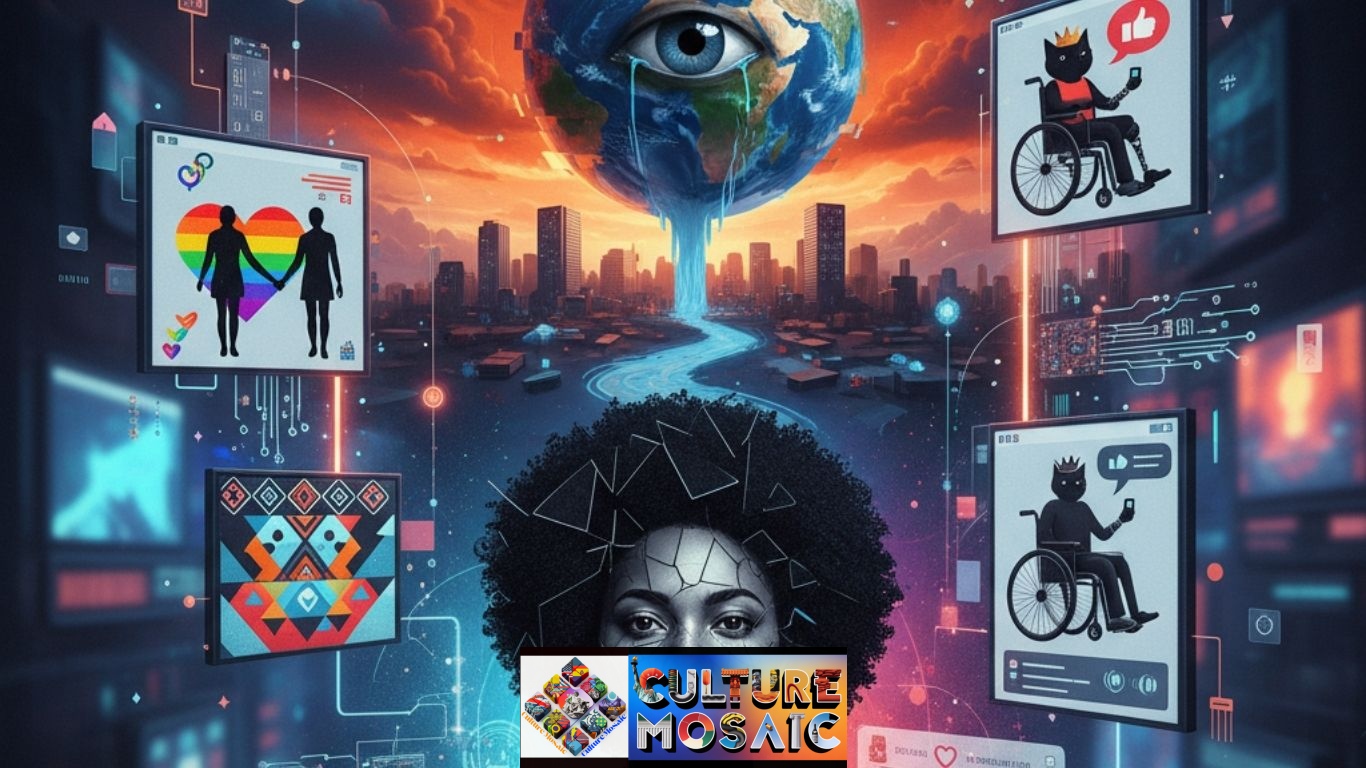
Digital artistic expression has become Gen Z’s preferred language for social and political commentary. When you need to communicate complex ideas quickly to a generation with an eight-second attention span, visual art is often more effective than words.
Climate change illustrations flood Instagram during environmental crises, translating abstract temperature data into visceral visual warnings. These aren’t dry infographics—they’re emotionally charged pieces that make people feel the urgency. A well-crafted illustration of a melting earth or drowning city can communicate more in a glance than a thousand-word article.
Social justice movements have been amplified by digital artists who create shareable graphics that distill complex issues into powerful visuals. During the Black Lives Matter protests, digital art became a tool for education and solidarity. Artists created infographics explaining systemic racism, portraits honoring victims of police violence, and protest posters that spread globally in hours.
Memes deserve serious consideration here. They’re often dismissed as frivolous, but Gen Z has elevated the meme to an art form and a weapon of political commentary. The best memes are miniature masterpieces of digital artistic expression: perfectly timed, visually clever, and capable of making complex political points accessible to millions. They’re the political cartoons of this generation, just faster and more viral.
The speed of digital creation means artists can respond to events in real-time. When news breaks, digital artists can have relevant work published within hours, shaping the visual narrative around important issues. This immediacy gives digital artistic expression a power that traditional art forms can’t match.
Young artists are also using their platforms to spotlight marginalized voices and challenge mainstream narratives. LGBTQ+ artists create joyful, affirming work that counters negative messaging. Indigenous artists use digital tools to share traditional stories with global audiences. Disabled artists challenge ableist assumptions through creative self-representation.
The commercial potential hasn’t been lost on this generation either. Artists who build followings through activism often monetize through Patreon, commissioned work, or merchandise. Digital artistic expression can be both meaningful and profitable, a combination that appeals to a generation facing economic uncertainty.
What sets Gen Z apart is their understanding that art and activism aren’t separate pursuits. Every piece of digital artistic expression makes a statement, whether explicitly political or not. The choice of subject, style, and platform all communicate values. This generation treats their creative output as an extension of their identity and beliefs.
The Technical Revolution: Tools Shaping Digital Artistic Expression
The software and hardware enabling digital artistic expression have evolved dramatically. Five years ago, professional-quality digital art required expensive desktop computers and specialized software. Today, some of the most impressive work is created on smartphones.
Procreate transformed the iPad drawing into a legitimate professional medium. Its one-time purchase price eliminated the subscription fatigue plaguing creative software, and its intuitive interface made advanced techniques accessible to beginners. The app has become so standard that “Procreate artist” is now a recognized category of digital creator.
Free and open-source tools have also democratized digital artistic expression. Krita and GIMP offer powerful features without the cost barrier of Adobe products. Blender has become the go-to for 3D modeling and animation, with a community-driven development model that keeps it cutting-edge. These tools prove you don’t need expensive software to create professional work.
Stylus technology has improved to the point where digital drawing feels nearly identical to traditional media. Pressure sensitivity, tilt recognition, and palm rejection have eliminated the technical barriers that used to make digital art feel clunky. Artists can focus on creativity rather than fighting their tools.
Cloud-based collaboration tools have changed how digital artistic expression happens. Artists on different continents can work on the same project simultaneously. Students can receive real-time feedback from mentors. The creative process has become more connected and less isolated.
Video tutorials and online courses have created a self-education ecosystem around digital artistic expression. YouTube hosts millions of free art tutorials covering every conceivable technique. Skillshare and similar platforms offer structured learning paths. The traditional art school model is being challenged by accessible, affordable online alternatives.
The Business of Digital Artistic Expression
Gen Z has figured out how to monetize digital artistic expression in ways that bypass traditional gatekeepers. You don’t need a gallery representation or a publisher anymore. You need an audience and a platform.
Patreon and Ko-fi let artists build sustainable income directly from fans. Instead of relying on sporadic commission work, artists can cultivate communities willing to pay monthly for exclusive content, early access, or just to support work they value. Thousands of artists now earn a full-time income this way.
Print-on-demand services like Redbubble and Society6 let artists turn digital work into physical products without inventory risk. A single illustration can become t-shirts, phone cases, stickers, and posters. The artist creates once and earns indefinitely.
NFTs, despite their controversial reputation, have provided some artists with life-changing income. The technology is still maturing, but the core concept—digital scarcity and provable ownership—has proven valuable for certain types of digital artistic expression. Smart artists ignore the hype and focus on using NFTs as one tool among many.
Freelance platforms like Fiverr and Upwork have connected digital artists with global clients. A talented illustrator in any country can work for companies anywhere, flattening geographic barriers to opportunity. The competition is fierce, but the market is enormous.
Social media sponsorships and brand partnerships have become major income sources for artists with substantial followings. Companies pay creators to produce branded content that feels authentic rather than advertising. For artists who can balance commercial work with personal vision, this can be lucrative.
The creator economy rewards consistency and audience building. Successful artists treat digital artistic expression as both art and business, posting regularly, engaging with followers, and treating their online presence professionally. It’s exhausting but necessary in an attention-driven economy.
Mental Health and Digital Artistic Expression
Creating art has always been therapeutic, but digital artistic expression offers unique benefits for mental health. The accessibility and privacy of digital tools let people explore difficult emotions without judgment.
Art therapy has found new life in digital formats. Apps designed specifically for therapeutic art-making guide users through exercises that promote emotional regulation and self-awareness. The digital format removes the intimidation some people feel when facing a blank physical canvas.
Online communities centered around digital artistic expression provide support and connection. Artists share not just their work but their struggles, creating spaces where vulnerability is welcomed. For isolated individuals, these communities can be lifelines.
The flip side is real: social media comparison and the pressure to constantly produce can harm mental health. Young artists struggle with algorithm changes that tank their reach or feel anxious when posts don’t perform well. Digital artistic expression as a career comes with mental health costs that previous generations didn’t face.
Some artists are using their platforms to normalize mental health struggles. They create work about anxiety, depression, and trauma, helping followers feel less alone. This vulnerability has become a defining feature of Gen Z digital artistic expression—work is often deeply personal rather than emotionally distant.
The instant feedback loop of digital platforms can be addictive and destabilizing. Artists refresh constantly, watching likes and comments accumulate or fail to materialize. Learning to create for intrinsic satisfaction rather than external validation is one of the hardest lessons for digital artists.
The Future of Digital Artistic Expression
Virtual and augmented reality will continue expanding what’s possible. As headsets become more affordable and comfortable, 3D art creation in virtual space will become mainstream. Imagine sculpting with your hands in mid-air, creating installations that viewers can walk through from their living rooms.
AI will become more sophisticated, but the need for human artistic vision will remain constant. The technology will improve at executing ideas, but generating worthwhile ideas requires human emotion, experience, and intention. Digital artistic expression will always need the human element.
The metaverse, whatever form it eventually takes, will require massive amounts of creative content. Digital artists are positioned to be the architects and decorators of virtual worlds. This could represent the largest creative employment opportunity in history.
Blockchain technology beyond NFTs might provide new ways for artists to control and monetize their work. Imagine automatic royalty payments every time your digital art is used anywhere online, or collaborative tools that fairly split revenue among contributors. The infrastructure is being built now.
Education will continue shifting toward digital-first approaches. Art programs are already incorporating digital tools, and schools are recognizing that digital artistic expression is as valid as traditional media. Future artists will likely be fluent in both physical and digital creation.
The line between artist and audience will keep blurring. User-generated content, remix culture, and collaborative creation are becoming standard. Digital artistic expression is increasingly participatory rather than presentational.
Frequently Asked Questions
What exactly is digital artistic expression?
Digital artistic expression is any creative work made using digital tools and platforms. This includes digital painting and illustration, 3D modeling, animation, AI-assisted art, AR filters, digital fashion design, and even memes when created with artistic intent. It’s distinguished from traditional art by its creation process and distribution method, though the artistic principles remain the same.
Do you need expensive equipment for digital artistic expression?
Not anymore. While professional equipment helps, many successful digital artists work primarily on iPads or even smartphones. Free or affordable software like Krita, GIMP, and various mobile apps provide powerful tools. The main investment needed is time to develop skills rather than money for equipment. A mid-range tablet with a stylus (around $300-500) is enough to create professional-quality work.
Is AI-generated art considered a real digital artistic expression?
This is hotly debated, but most artists agree it depends on the process. If you use AI as a tool within a larger creative workflow—refining prompts, curating results, and editing outputs—then yes, it’s a valid form of digital artistic expression. If you generate one image with minimal input and claim full authorship, that’s more controversial. The key is whether human creativity and decision-making drive the final result.
Can you actually make money from digital artistic expression?
Absolutely. Thousands of artists earn a full-time income through various methods: direct fan support on platforms like Patreon, print-on-demand merchandise, freelance commissions, brand partnerships, teaching courses, NFT sales, and licensing work for commercial use. The challenge isn’t whether it’s possible but rather building an audience and maintaining consistent quality. Most successful artists diversify their income across multiple streams.
How is Gen Z changing digital artistic expression differently from previous generations?
Gen Z treats digital artistic expression as inherently social and often activist. They’re more comfortable with collaborative and remix culture, less concerned with traditional gatekeepers, and more willing to blend art with commerce. They use art for identity exploration and political commentary more explicitly than previous generations. They’re also the first generation that’s truly native to social media platforms as creative spaces rather than just distribution channels.

